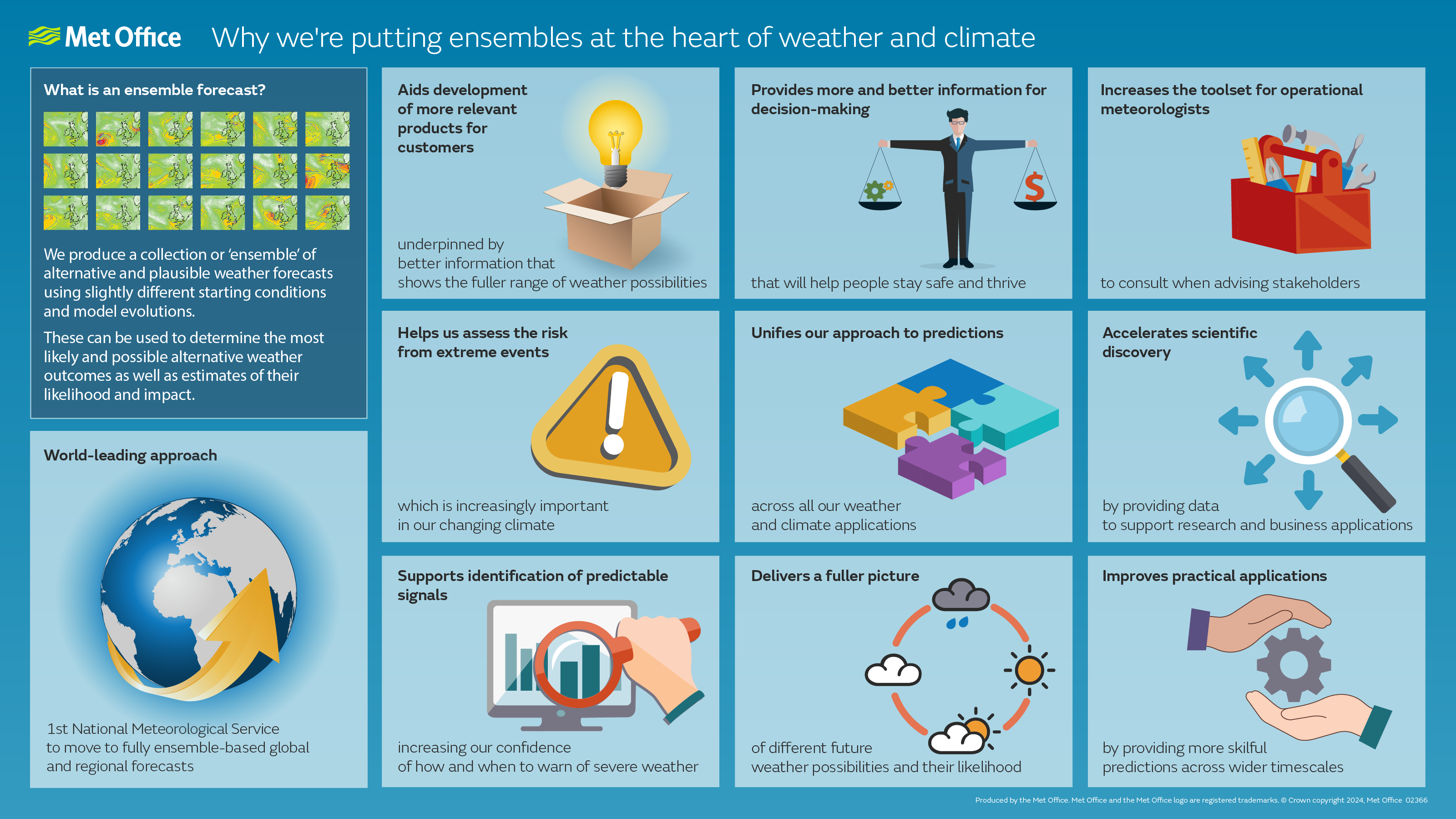Using our models to forecast weather
A forecast is an estimate of the future state of the atmosphere.
Forecasts are created by estimating the current state of the atmosphere using observations, and then calculating how this state will evolve in time using a numerical weather prediction computer model.
Traditionally most of our forecasts, products and services have come from using a deterministic approach, where a weather forecast is produced by a computer model to give a single outcome.
In future, although we will still be providing a deterministic forecast for the public, we will also use an ensemble forecasting approach where our computer models are run multiple times to produce forecasts that reflect the range of possible weather scenarios and how likely they are. This is particularly helpful in supporting planning and decision making by providing awareness of when severe weather is a possibility, even in the case of less likely, high-impact extreme weather events.
The Met Office is the first National Meteorological Service to move to fully ensemble-based global and regional forecasting. Hitherto, the use of ensemble forecasting has been focused on the production of supplementary products to help understand uncertainty, and for a small number of specialised products and services. There are a wealth of reasons for making this landmark change.
As computer models improve it becomes increasingly difficult to improve the forecast accuracy in the traditional way, but by taking account of the range of possible outcomes we can better estimate the most likely outcome. In this way we can continue to deliver ongoing forecast improvements, provide more timely forecast output and better represent the forecasting of risk and uncertainty, which is especially important as our climate changes.
Other benefits include:

-
Improvements to forecast accuracy More skilful predictions across timescales
-
More information available for decision-making that will help people stay safe and thrive
-
Helps us assess the risk from extreme events Increasingly important as the unpredictability in our climate increases
-
Increases the toolset for operational meteorologists to consult when advising stakeholders
-
Aids development of more relevant products for customers that show the full range of weather possibilities
-
Supports identification of predictable signals of possible extreme weather
-
Delivers a more holistic picture of the different future weather possibilities
-
Faster delivery of ongoing forecast improvements than possible from deterministic forecasts
-
Accelerates scientific discovery by supporting business and scientific research
-
Unifies our approach to predictions across all our weather and climate applications
Using ensemble for forecasting will not always change the look of our forecasts but will help improve accuracy by focusing on the most likely outcome and provide the opportunity to supply much more information on risks and uncertainties where that is useful to help people make better decisions.
In this short video, Alex Deakin explains more about what ensembles are and how and why we use them.


